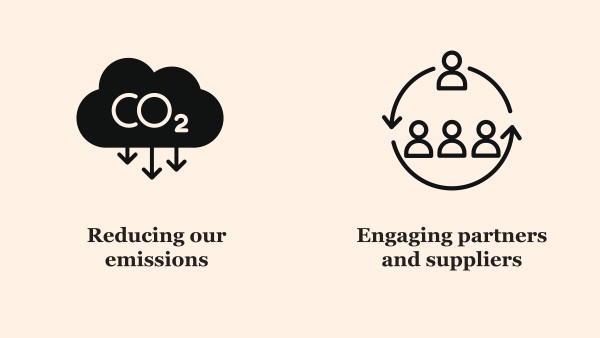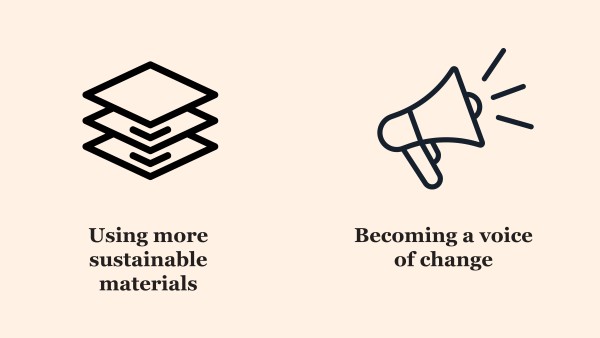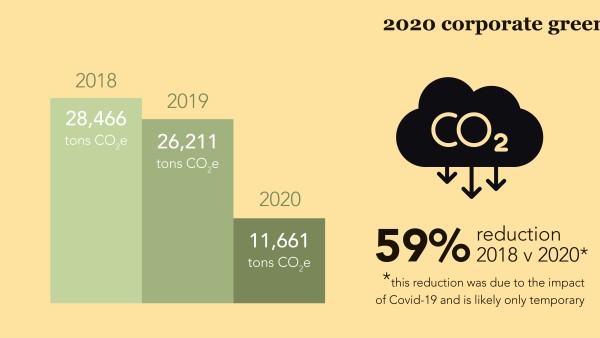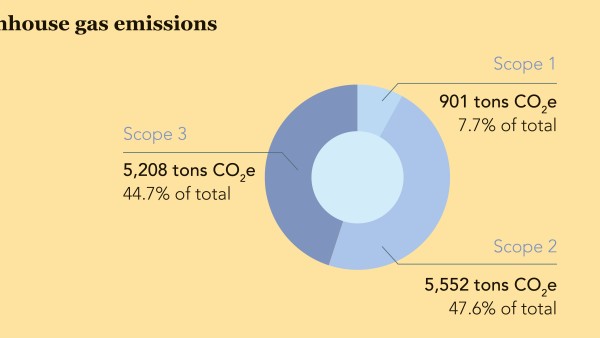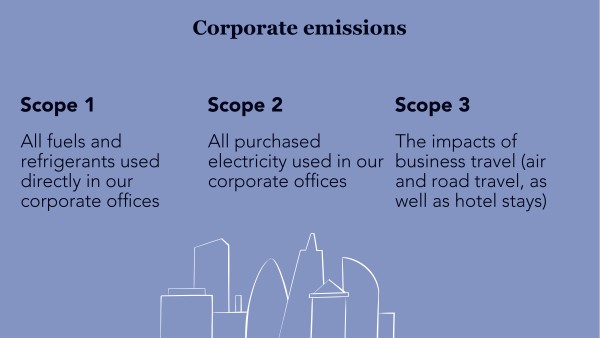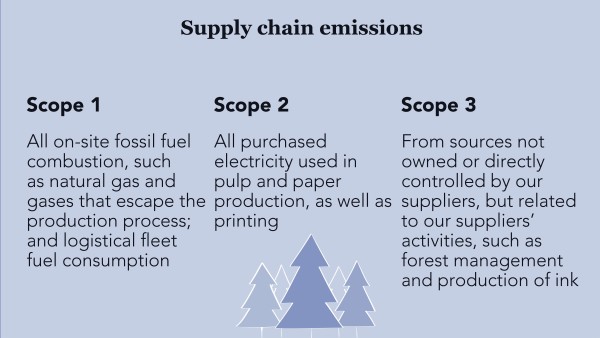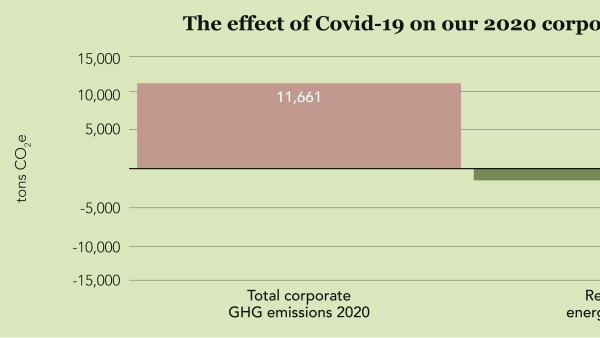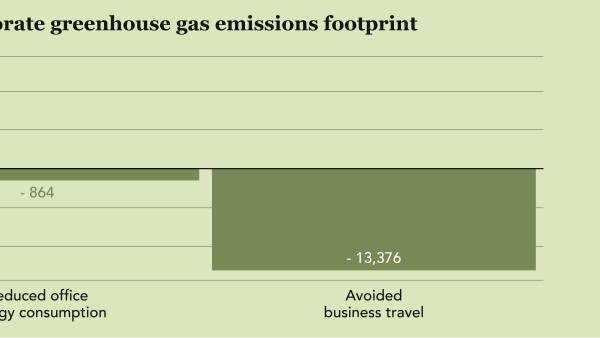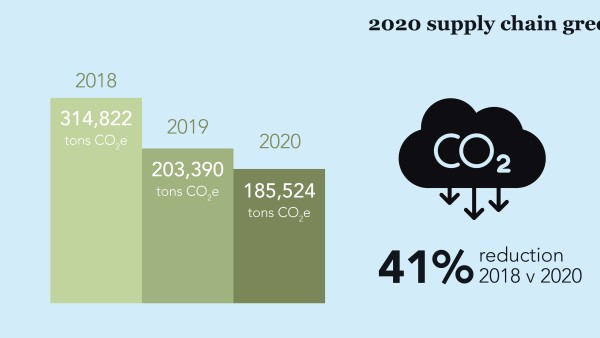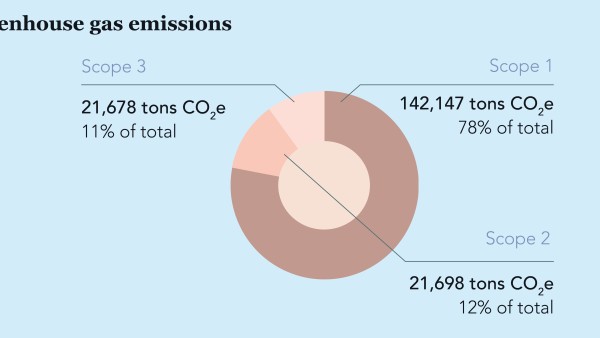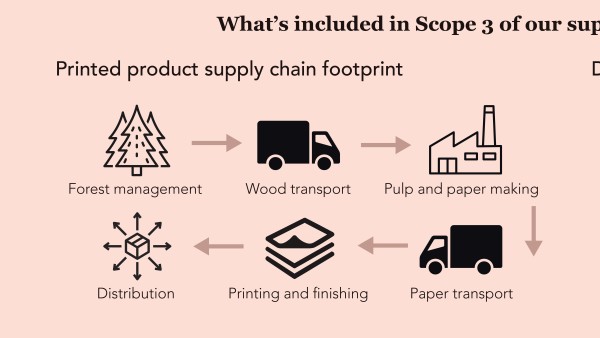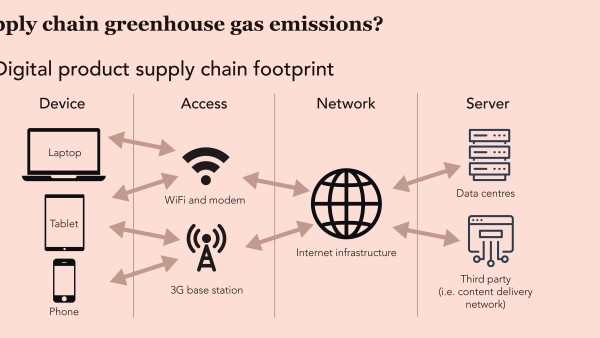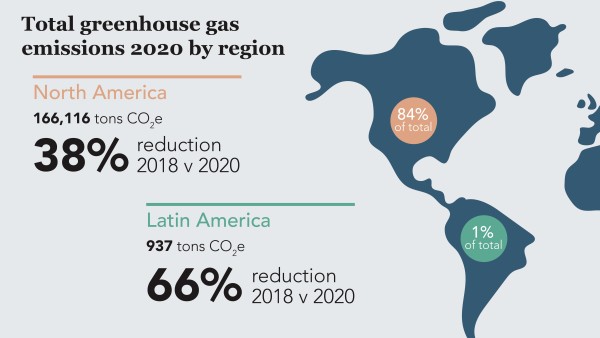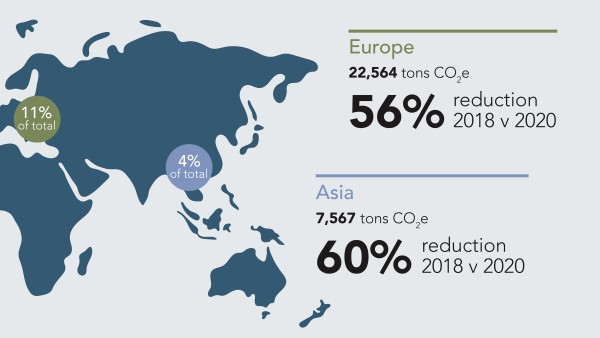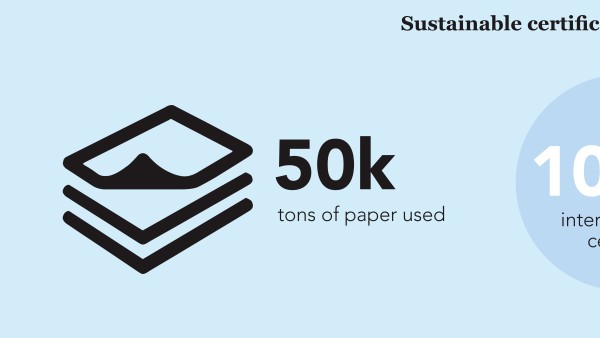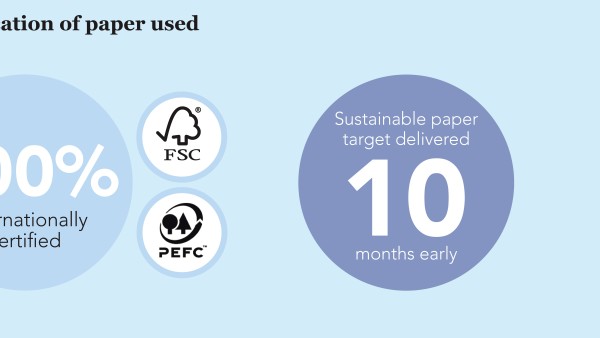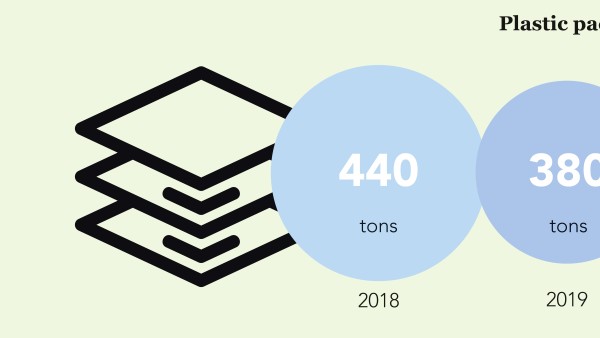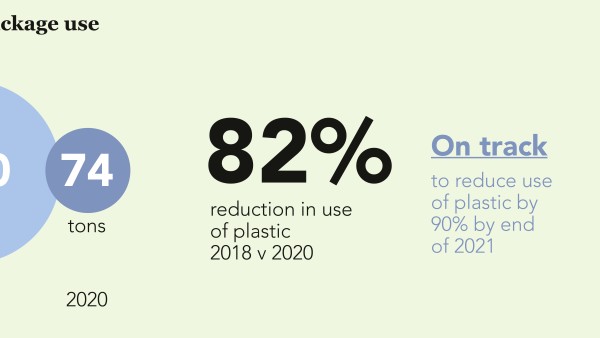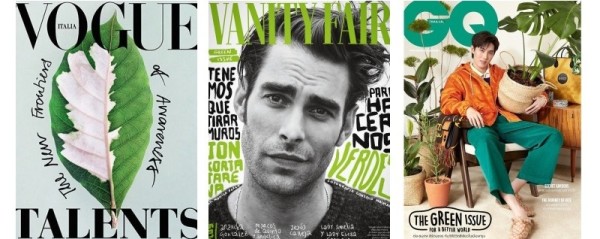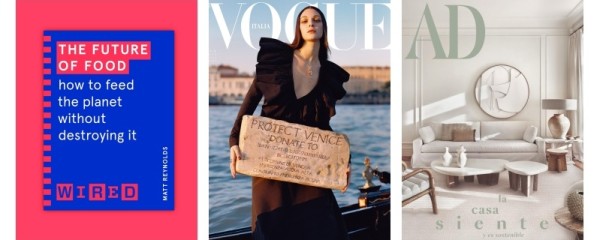
SUSTAINABILITY
Phase One Report
MAY 2020 - SEPTEMBER 2021
Our Sustainability Vision
At Condé Nast, we are dedicated to having a positive social and environmental impact. For more than a century, our iconic brands have driven the cultural conversation, sparked global movements and propelled change around the world. We not only inform our audiences, but inspire them to take meaningful action.
Our Sustainability Statement, published in 2019, was a recognition that, although we’ve always strived to achieve the highest standards in everything we do for our readers, viewers and clients, we needed to do more in looking after the natural environment.
We created our first five-year Sustainability Strategy, with a series of commitments and intentions for 2025. We are committed to driving improvements across four key areas where we see the need for transformation over the next few years.
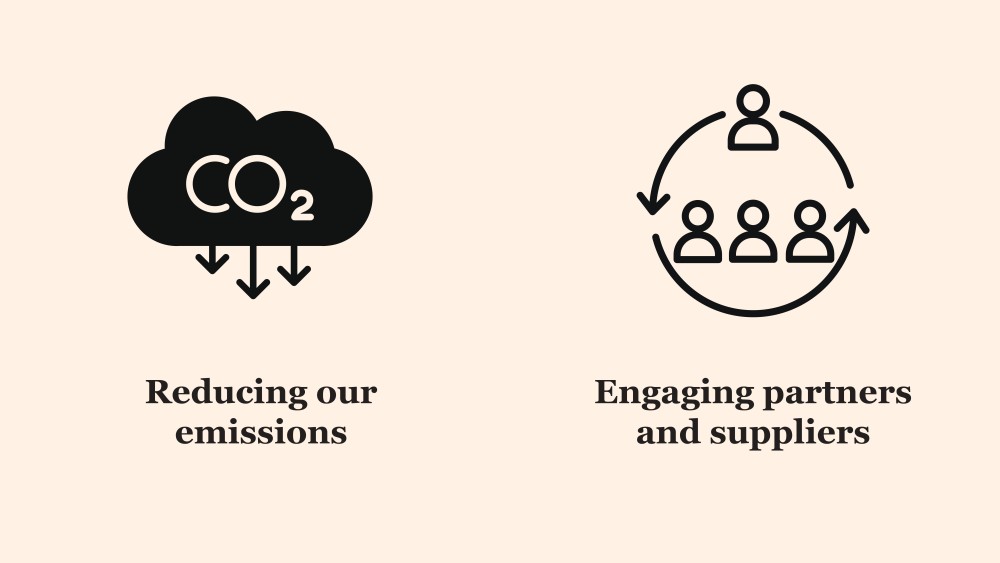
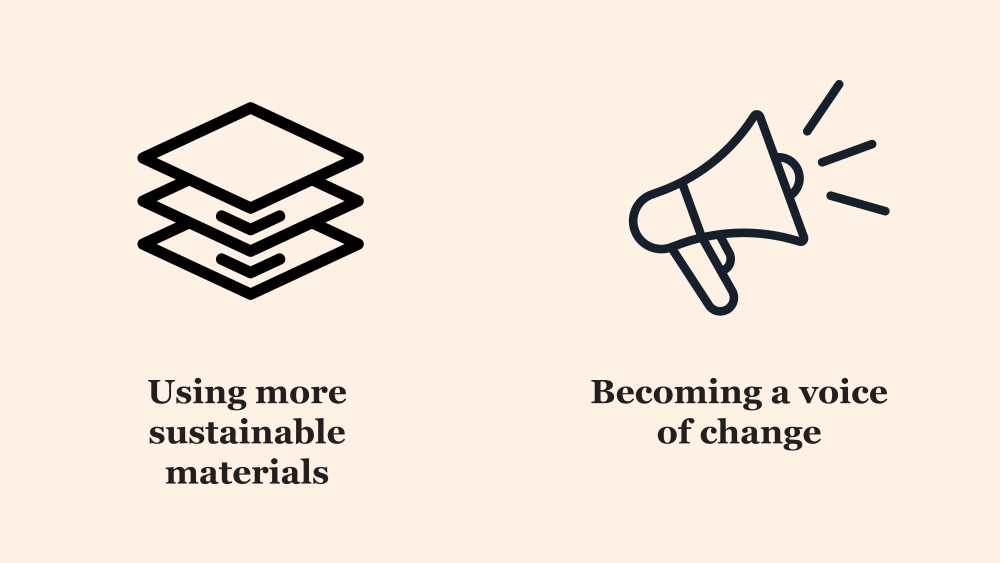
Our approach is based on incremental changes and improvements delivered in three phases.
Here, we give an update of progress against Phase One, which ran from May 2020 to September 2021. With a number of baseline metrics already in place, the key objective of Phase One was to:
- establish a foundation for our sustainability transformation across all business functions and operations;
- set public targets;
- develop a structured reporting process for accountability and delivery; and
- integrate sustainability considerations into our daily workflow.
At a glance: Key highlights from Phase One
- We have reduced our corporate greenhouse gas emissions by 59% since 2018.
- We committed to become carbon neutral by 2030 and will establish a science-based target to get there.
- Our offices in London, Germany, Italy and Spain are all using 100% renewable energy. By 2025, all of our offices globally will have made the switch to clean energy.
- We committed to eliminate all single-use plastic by 2025.
- We've already eliminated 82% of our single-use plastic.
- From January 2021, 100% of the paper in our print magazine titles of our owned operations will be internationally certified as ‘sustainable’ – meaning we have delivered against our target ten months early.
- We launched a new Sustainable Travel Policy to promote low-carbon travel options.
- We have a new green procurement process, designed to encourage suppliers to address their environmental impacts. Our new supplier onboarding system, CN Onboard will make it easier to screen their environmental credentials.
- We are actively participating in global sustainability events, including COP26, supported by our new team of sustainability editorial ambassadors.
- Vogue is supporting the Fashion Values knowledge-sharing program to help spread insight and expertise in sustainability.
- We launched The Sustainable Fashion Glossary with the London College of Fashion to strengthen the fashion industry’s understanding of sustainable fashion and the sector’s role in addressing the climate crisis.
Reducing emissions
Our aim is to reach zero carbon by 2030 by reducing our greenhouse gas (GHG) emissions and offsetting our carbon where reduction is not possible.
Our Phase One goal was to achieve a 20% reduction in corporate GHG emissions and a 10% reduction in supply chain GHG emissions by the end of 2021.
Tackling our emissions
In 2020, we published our first cross-market GHG emissions assessment results, against a 2018 baseline. We have committed to disclosing this information to be completely transparent and accountable for our contribution to the ongoing climate challenge.
We set up a reporting process so that our global teams and suppliers can input and update our global carbon inventory.
We follow the Greenhouse Gas Protocols established by the World Business Council for Sustainable Development and the World Resources Institute. They are a set of internationally accepted standards for GHG accounting and reporting. This approach allows us to assess our entire value chain emissions impact and identify where to focus reduction activities.
We look at the following elements of our corporate facilities and supply chain:
Corporate:
- All fuels and refrigerants used directly by our corporate office facilities;
- All purchased electricity used in our corporate office facilities; and
- The impacts of business travel, including air and road travels, as well as hotel stays.
Supply Chain:
- Printed products, including cradle-to-gate emissions associated with paper used (forest management, wood transport, pulp and paper-making, paper transport), emissions associated with production (printing, finishing) and emissions associated with distribution of the finished product (via subscriptions, newsstand, and other routes); and
- Digital media, including emissions produced by content distribution across networks, and emissions from the devices used by readers to consume content published across Condé Nast’s digital properties.
In 2020, Condé Nast generated a total of 197,186 tons of carbon dioxide equivalents (CO2e). In 2019, that figure was 229,594 tons CO2e. The majority of our total GHG footprint is associated with our supply chain, which is beyond our direct control.

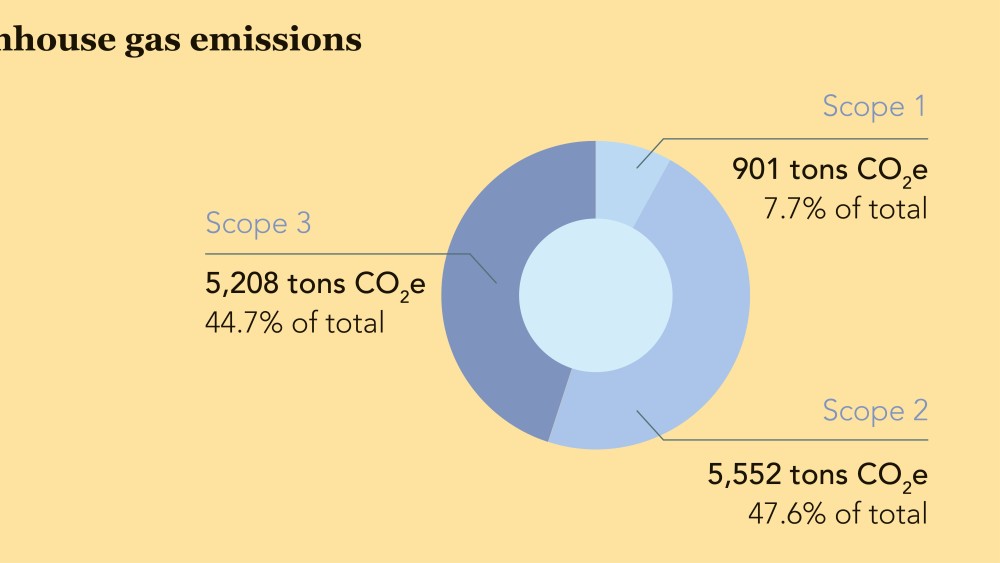
The electricity we use in our offices is our largest direct source of corporate GHG emissions, while air travel accounts for our largest indirect GHG impact.
Overall, our corporate GHG emissions fell substantially in 2020, by 59%. This was due to the Covid-19 pandemic that resulted in many of our employees working remotely. But with more people returning to the office, this Covid-induced reduction is expected to be temporary. Our new Travel Policy will help us to maintain this positive trend even as restrictions are lifted.
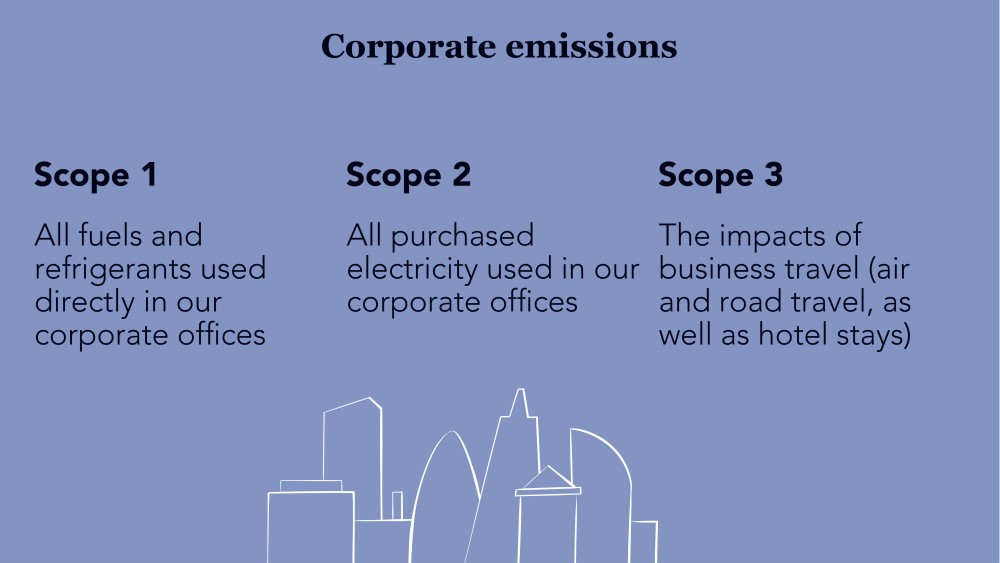
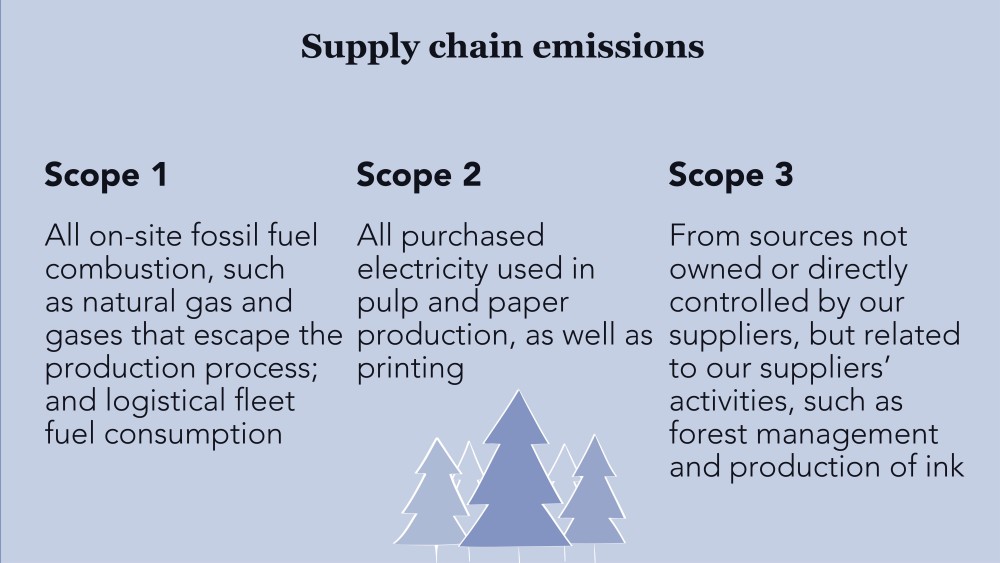
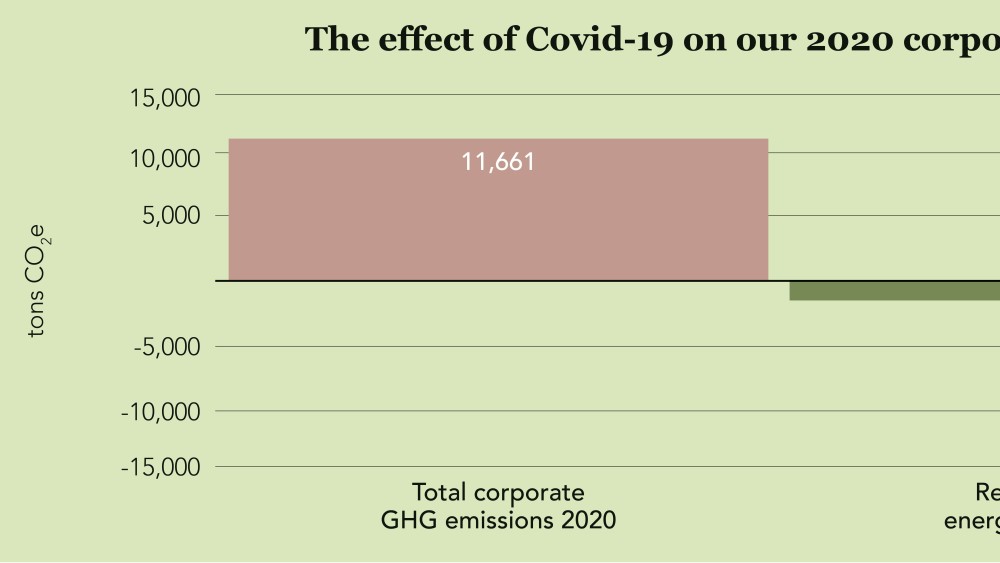
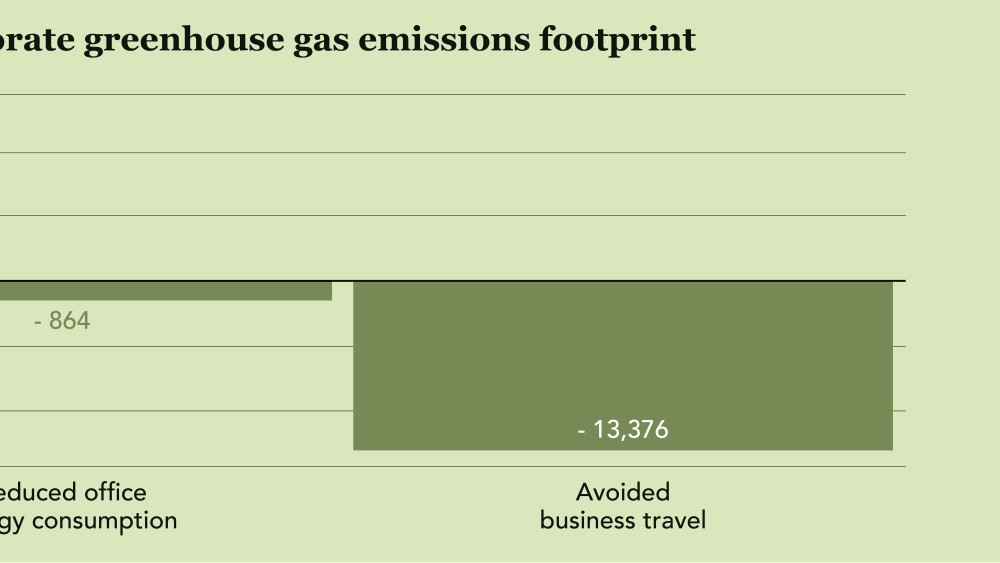
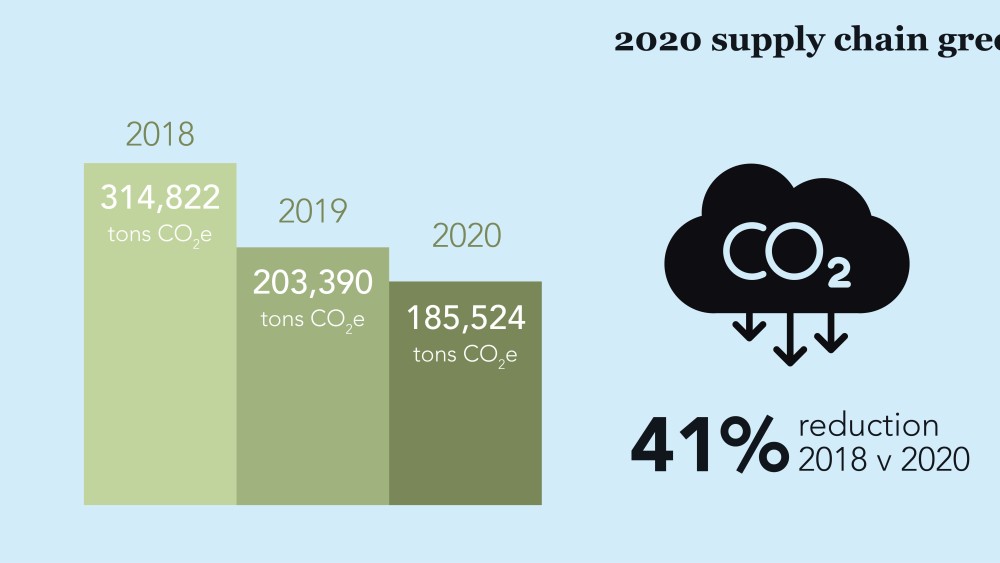
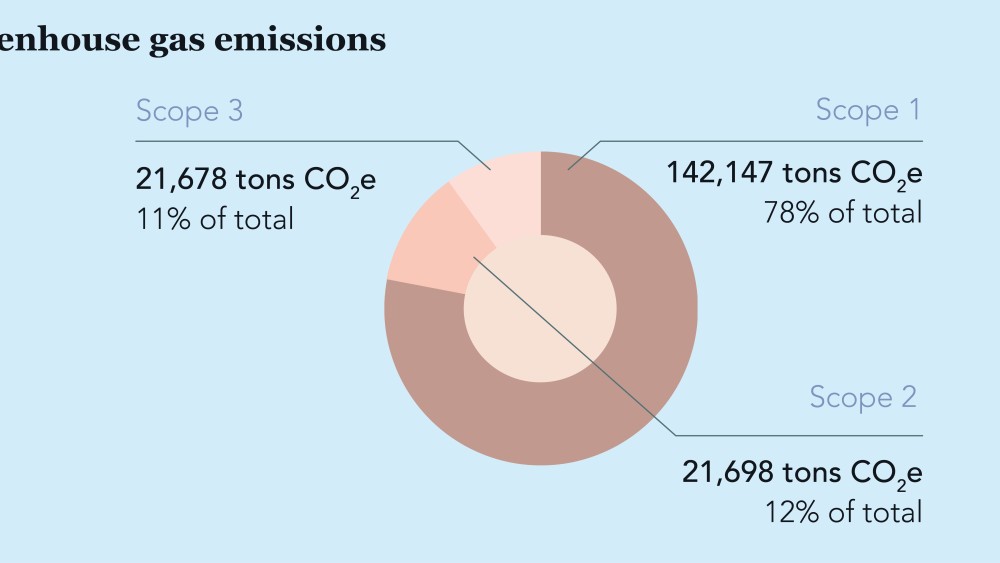
Print production and circulation are responsible for the largest source of our supply chain GHG emissions footprint.
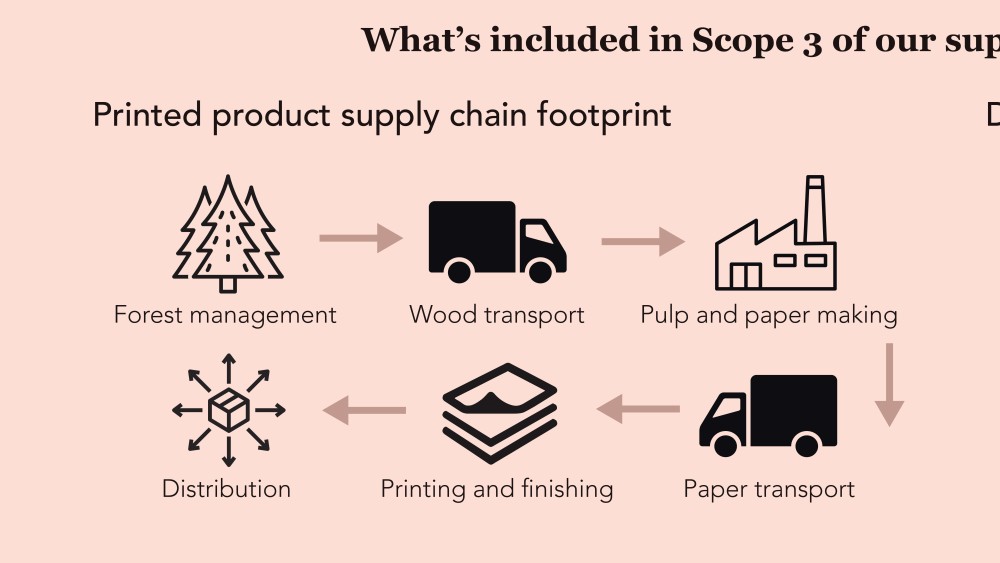
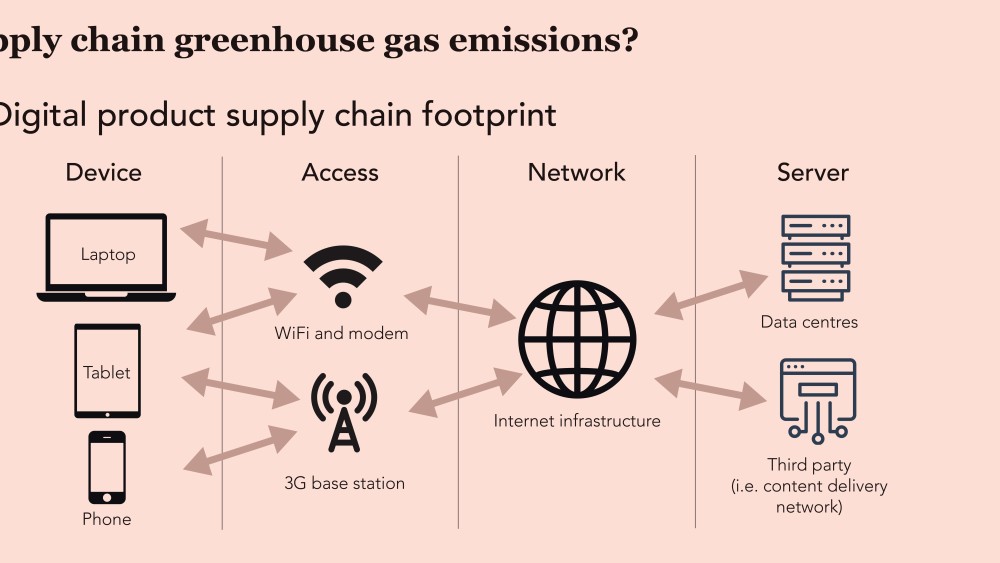
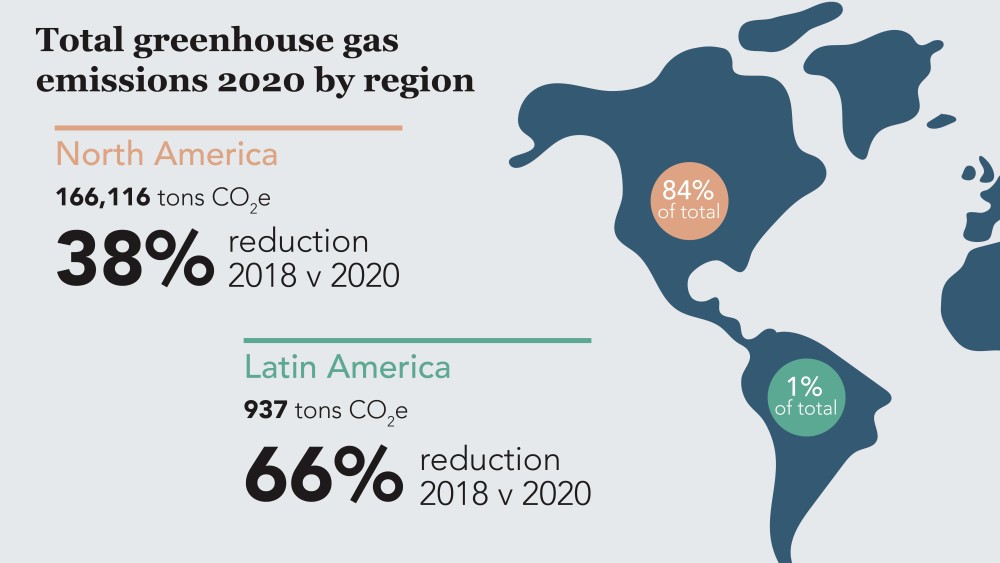
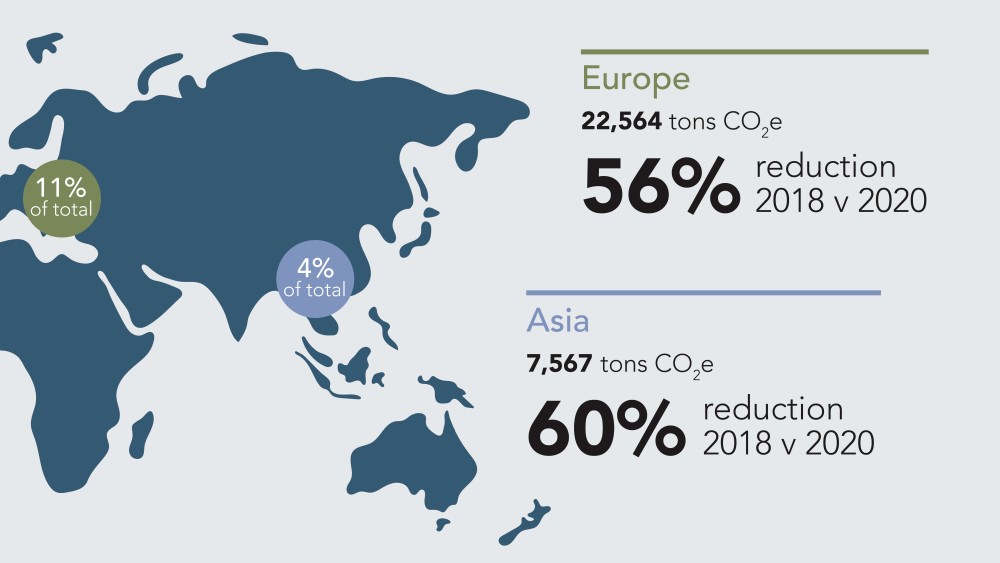
Aligning with the best available science
To enhance our climate ambitions we have committed to set a science-based target through the UN-backed Science Based Targets initiative (SBTi) and to report publicly on our progress. In fact, Condé Nast is the first media company which publishes print to sign up to the SBTi's Business Ambition for 1.5°C. This means that our GHG emissions reduction goals will be aligned with the ambitions of the global Paris Agreement and the Race to Zero campaign.
Transitioning to renewable energy
By the end of 2021, our offices in the UK, Germany, Italy and Spain will have all transitioned to using 100% renewable energy for our electricity needs.
We will continue exploring green energy options in our markets and integrate energy-efficiency improvements as part of our global property review and strategy.
Making business travel more sustainable
Our first global carbon assessment baseline found that 70% of our corporate GHG footprint was generated by employee business travel. So, it is imperative that we encourage low-carbon travel wherever possible across our corporate functions and brand content teams.
We have introduced a new Sustainable Travel Policy that promotes low-carbon travel options, encourages teams to continue to collaborate remotely and limit business travel as much as possible. The introduction of Vogue’s Collections Travel Policy in August 2021 perfectly illustrates our strong commitment to embracing innovative and more sustainable ways of working while never compromising on quality, creativity and excellence across our markets and brands.
Meaningfully contributing to climate action
We are building an environmental investment portfolio by financing climate action that generates proven positive impact through Gold Standard.
Engaging suppliers
Our aim is to encourage suppliers to align with Condé Nast’s sustainability objectives, champion industry-led initiatives to foster supply chain transformation, and encourage our licensees to adopt environmental best practices.
Our Phase One goal was to revise our global procurement approach and collaborate with business partners on delivering our sustainability objectives.
Onboarding suppliers
In 2021, we introduced a new set of Procurement Principles and a revised system for onboarding new suppliers called CN Onboard. CN Onboard has a dedicated due diligence process in place to screen suppliers’ environmental sustainability credentials.
Our procurement process now includes a section on Green Procurement and Environmental Practices. It states that, as a minimum, all suppliers must follow the environmental recommendations for their particular industry. This will be monitored through our Request for Proposals and supplier onboarding process that all suppliers must now follow. Additionally, sustainability risk assessments are now a core part of our global procurement process.
Hotels
We will only work with hotel partners that are taking sustainability seriously. Environmental criteria is fully integrated into the decision-making process to determine which hotels we partner with.
Food
In 2020 we introduced a Food Sustainability Charter across our portfolio of licensed branded properties, including restaurants and bars. We regularly assess the sustainability credentials of each of these venues and we work with our licencing partners to incorporate sustainable practices into their operations, such as reducing food waste, improving recycling, eliminating the use of plastic, where possible, and sourcing local ingredients.
Merchandise
In early 2021, we piloted a full environmental and social risk due diligence process to ensure sustainability considerations are embedded in our branded merchandise collaboration with licensees. The new process involves tracing upstream sustainability credentials across our licensed partners’ owned operations, as well as their manufacturers.
Using more sustainable materials
In 2020, we published our first cross-market materials usage assessment results and established a 2018 baseline. We committed to conduct regular assessments of the materials we use, focusing on paper and plastic packaging, and to assess the environmental credentials of our print suppliers.
Paper
In 2019, 98.7% of the almost 72,000 tons we used was internationally certified as being from a ‘sustainable’ source by either FSC or PEFC.
In 2020, 99.9% of the almost 50,000 tons of paper we used was internationally certified. From January 2021, 100% of the magazine paper used by our owned operations was internationally certified. This means we have delivered against our paper target ten months early.
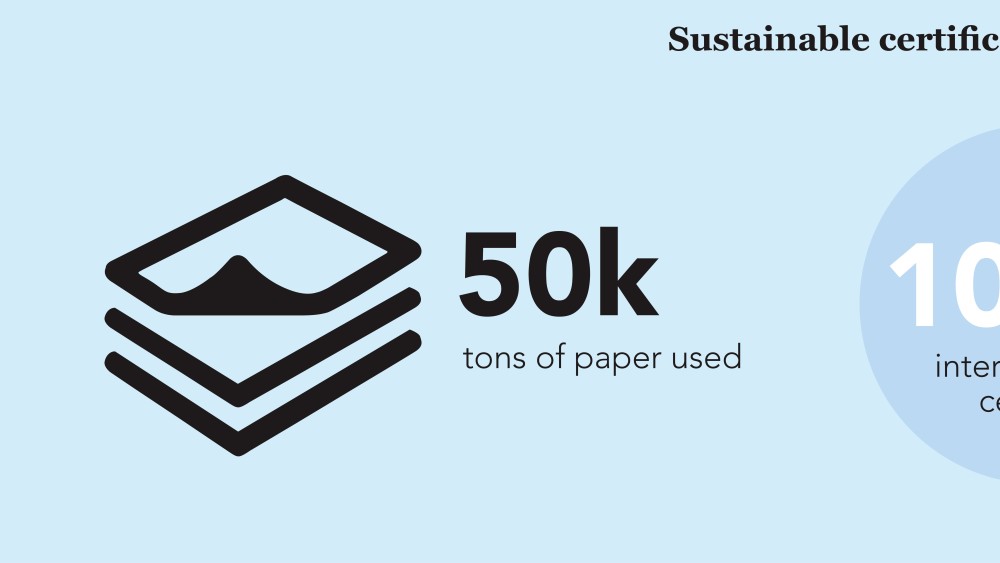
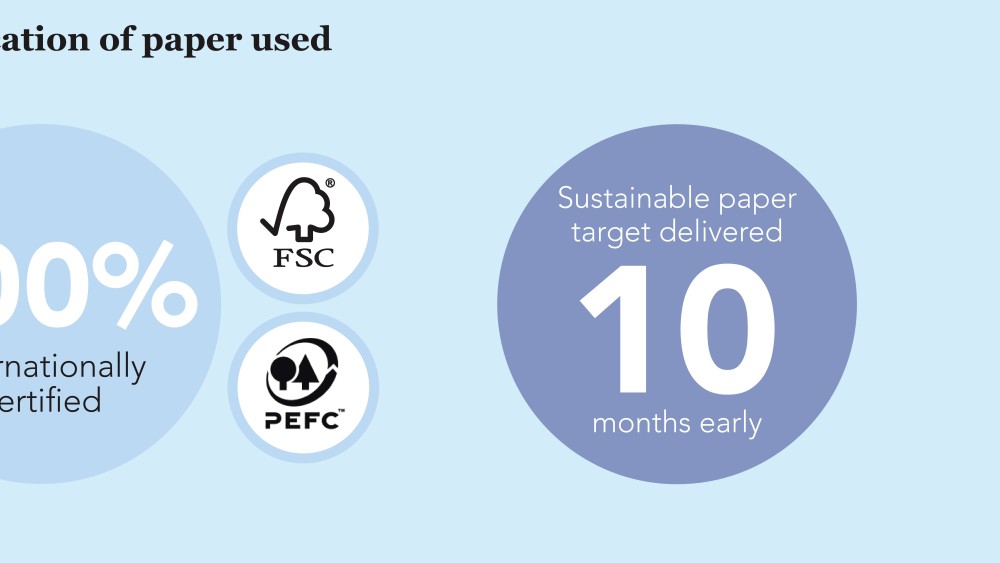
Plastic
Condé Nast is committed to phasing out fossil-based, non-recyclable plastics (i.e. single-use plastic wraps) from all products by 2025 as part of our commitment made via the Ellen MacArthur Foundation New Plastics Economy Global Commitment. Our regular internal material audits, conducted between now and 2025, will ensure we stay on target to meet this commitment.
Since launching our commitment in May 2020, we have strived to identify and test alternatives to single use plastic packaging. We eliminated packaging altogether where possible or replaced it with easily recyclable alternatives: paper wrapping, paper envelopes, recycled plastics made from post-consumer waste, and bio-based compostable packaging made from potato starch, sugar cane or corn.
In 2020, we used approximately 74 tons of single-use magazine wrapping, an 82% reduction from our 2018 baseline. By the end of 2021, the reduction will be 90% from our 2018 baseline.
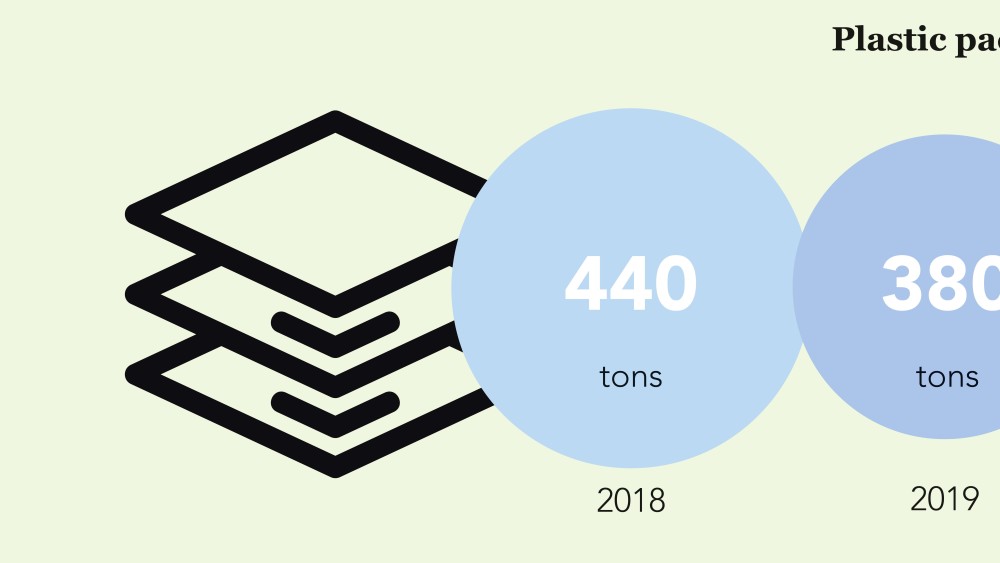
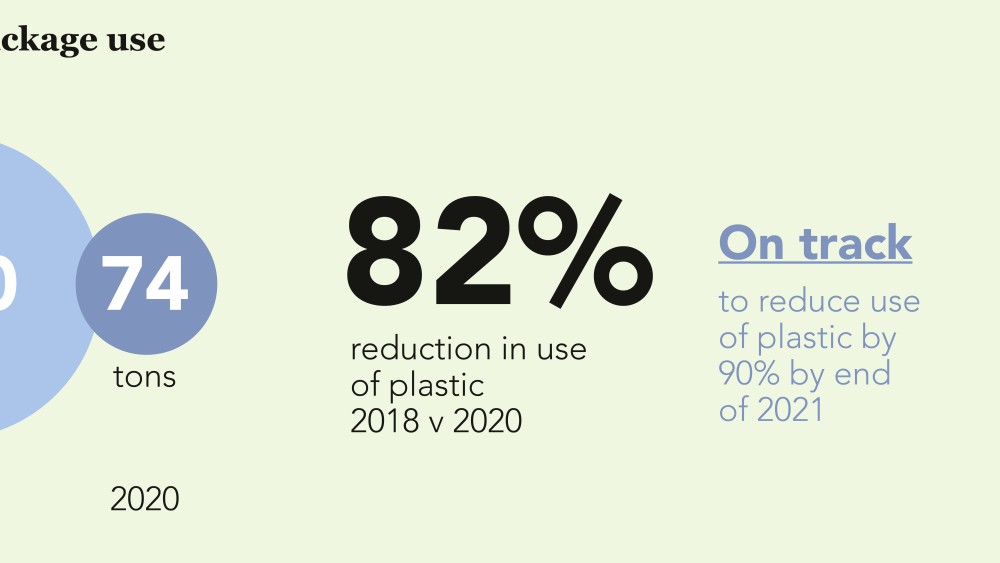
We are already phasing out plastic wrapping in ten of our markets for both subscription and newsstand titles. We are using alternative packaging materials and solutions, including: naked mailing; paper wrapping; paper envelopes; recycled plastics made from post-consumer waste; and bio-based compostable packaging made from potato starch, sugar cane or corn.
There are still barriers to switching away from plastic, not least because it is a versatile solution for newsstand copies of our titles as it is transparent, economical and flexible.

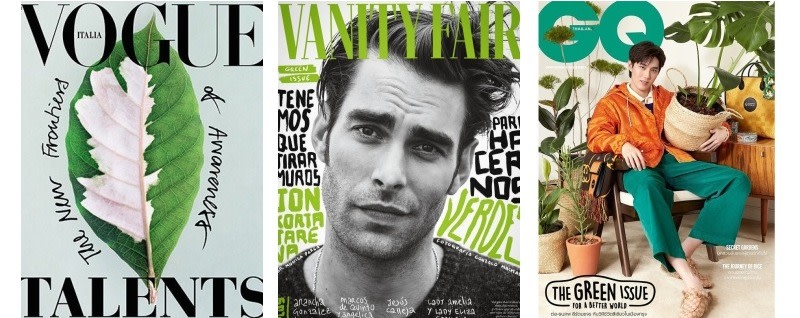
Becoming a voice for change
Our goal is to firmly position Condé Nast and its brands as leading advocates for sustainability, with industry peers and audiences. We also want to strengthen our expertise at a corporate and editorial level to further enhance our credibility and authority as a trusted voice in the public sustainability debate.
Our Phase One goal was to focus on championing a more sustainable corporate culture while informing and inspiring our audiences through our brands. We aim for our brands to be recognized as leading advocates for sustainability, setting higher reporting standards on issues of climate change and sustainable fashion.
Our Sustainability Global Employee Council and Steering Committee developed and activated a number of internal and public engagement initiatives, including the establishment of the Green Awards, an internal program that celebrates content creators across the company who are raising awareness around sustainability and creating meaningful, impactful content that inspires change.
Improving the fashion industry’s understanding of sustainability
In May 2020, we launched The Sustainable Fashion Glossary, developed in partnership with the Centre for Sustainable Fashion at the London College of Fashion, University of the Arts London. It is an open and accessible resource designed to strengthen the fashion industry’s understanding of sustainable fashion and the sector’s role in addressing the climate crisis.
The Glossary is an easy-to-use guide providing the fashion community with clear and peer reviewed definitions on 250 terms on a range of subjects, including the environmental impacts of fashion, the social, cultural and economic impacts of fashion.
We are also founding partners of Fashion Values, an initiative that brings together a network of people working in design, technology, media and academia to share their sustainability knowledge and best practices.
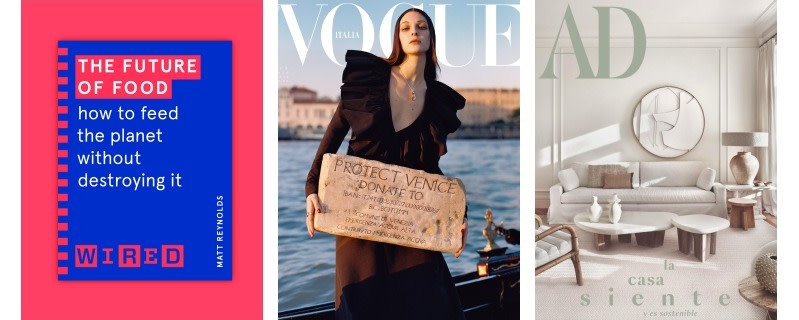
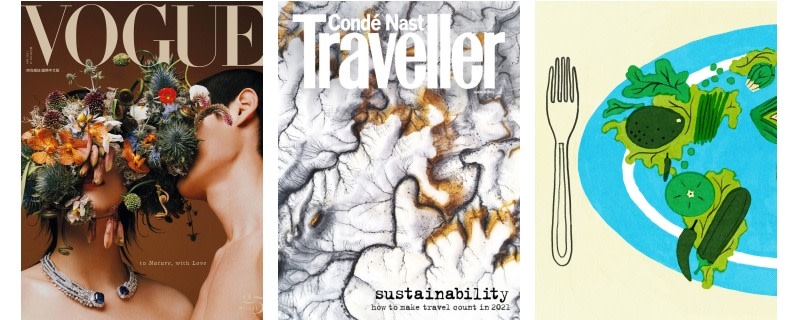
Taking to the global stage
We are using the power and influence of our brands to take sustainability issues to the global stage.
We're excited to be the first media signatory of the UNFCCC’s Fashion Industry Charter for Climate Action, of which we are playing an active role in developing new guiding principles for fashion brand communications and promoting broader climate actions across the industry.
In Davos, for the annual World Economic Forum, the Vogue Business team moderated a panel on fashion circularity.
Increasing and enhancing our coverage of the climate crisis
Our brands are becoming increasingly proactive in covering the climate crisis and biodiversity issues.
Recent initiatives include:
Vogue Values is a global mission statement, adopted by all 26 editions of Vogue and articulates the titles’ shared commitment to sustainability that editors will stand by.
The GQ Change Is Good initiative saw all 21 editions of the title devote their September issue to the imperative for a better future, with a dedicated focus on diversity, gender equality, sustainability, and mental health.
Vogue Japan’s Vogue Change initiative provides a dedicated, ongoing editorial program tackling subjects such as diversity, gender and inclusion.
Vogue Taiwan’s multi-platform #VogueConscious campaign helps readers to live more environmentally conscious lifestyles by giving them practical support and inspiration.
Vogue Italia’s Vogue Talent, sponsored by the City of Milan, supports the next generation of creatives and designers with a specific focus on environmentally responsible projects. Meanwhile, the YOOX Challenge supports designers, creatives and start-ups which are investing in a responsible, sustainable approach to fashion and design.
Wired Japan dedicated editorial and events to regenerative food, a movement that promotes local production for local consumption of food.
Wired UK’s new series of books exploring big ideas included an edition on climate change, which featured analysis of the science of climate change and an overview of ways to reduce carbon emissions. There is also an edition on the future of food, exploring how we feed a population of 10 billion without destroying the planet.
The Vanity Fair x Pictet video campaign, The Vanity Fair Future Series, dedicated an episode to exploring the future of fashion.
Condé Nast supported La Cucina Italiana's film Born to Be Sustainable, a special project in support of the UN Food Systems Summit. It followed a small community in the Italian Dolomites — a UNESCO World Heritage Site — to explore how they live, work and eat in harmony with their local environment.
Architectural Digest Mexico and Latin America launched Planet AD, a digital guide to living a greener life. It covers architecture and design, sustainable materials and advice on gardening and food. The April edition even featured a cover made from seed paper.
Vogue US's Earth to Us initiative explores how the climate crisis is changing our lives, and what we can do to improve the future.
Vogue Espana’s Vogue 365 is dedicated to sharing stories of innovation for creating a more sustainable and environmentally friendly industry in the fields of fashion, beauty and lifestyle.
The Condé Nast College of Fashion & Design in London collaborated with online learning platform, FutureLearn, to launch affordable courses for beginners, covering fashion futures, ethics and diversity in fashion, sustainable luxury and the business of beauty.
